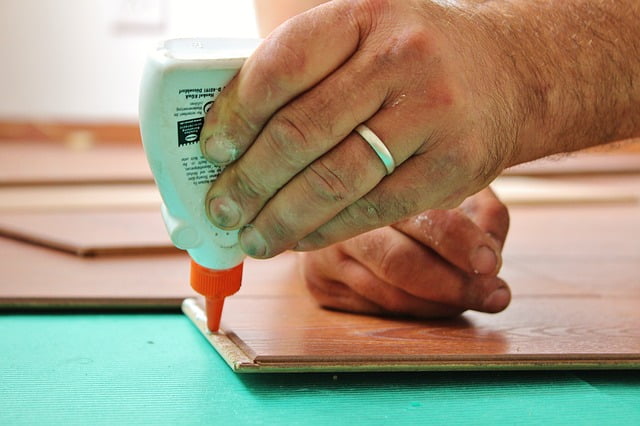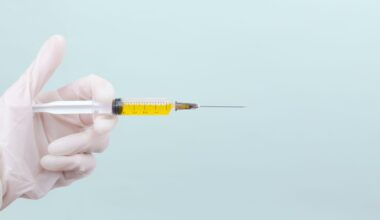If you have a favorite shirt that has been ruined by deodorant stains, you are not alone. Deodorant stains are one of the most common laundry problems. You can get white shirts with yellow or brown armpit stains.
Deodorant stains are caused by a buildup of deodorant residue that has been absorbed into the fibers of your shirt. The longer you wear the shirt, the more likely it is that a stain will develop.
Fortunately, there are a few things you can try to get that stubborn deodorant buildup on shirts.
How to get hard deodorant stains out of shirts
Deodorant stains are frustrating, especially when they’re on your favorite shirt. The good news is that you don’t have to throw out your clothes if you get deodorant stains on them.
These tips will help you remove deodorant stains from your clothes and prevent them from coming back:
Use Dish Soap And Hydrogen Peroxide
Dish soap and hydrogen peroxide are two ingredients that work well together at removing deodorant stains. The combination of dish soap, hydrogen peroxide, and baking soda is effective at removing stubborn deodorant stains from fabrics made from cotton, wool, or polyester (including blends).
This method is also good for removing sweat stains caused by perspiration rather than deodorant use.
- Place the stained garment in a sink full of warm water and add 2 tablespoons of dishwashing liquid.
- Then pour 1/4 cup hydrogen peroxide into the sink, followed by 1/2 cup baking soda.
- Stir gently until all of the ingredients are dissolved and then allow the garment to soak for 5 minutes before washing it in hot water with regular laundry detergent.
White Vinegar
White vinegar is an inexpensive stain remover that works on many types of stains. It’s mild enough for delicate fabrics like silks and cotton, but strong enough for tough stains like blood and ink. The acidity in white vinegar also helps dissolve proteins like sweat and dirt.
To use white vinegar as a stain remover:
- Mix 1/2 cup (120 ml) white vinegar with 2 cups of cool water in a spray bottle.
- Spray the stained area liberally with the mixture, then blot with a paper towel or cloth until no more liquid comes out of the fabric. Repeat until no more stain remains on the fabric.
- Allow the garment to dry before wearing it again.
Rub Vaseline on the Stain
If you have some Vaseline around, apply it to the stain and let it sit for about 20 minutes. Then, use a washcloth or sponge with warm water to rub off the Vaseline and any residue from the stain. This method is not guaranteed to work but it’s worth a shot if all else fails.
Use Baby Wipes or Makeup Remover Pads
Baby wipes and makeup remover pads both do an excellent job of removing tough stains from clothing because they contain oil-absorbing ingredients that break down the grease in deodorants and other cosmetics.
Rub these products on the stained area with your fingers or a washcloth until all remnants of deodorant disappear from the fabric of your shirt.
Hydrogen Peroxide
Hydrogen peroxide is another great cleaning product to keep on hand because it’s milder than white vinegar and can still remove stains effectively without damaging fabric fibers like bleach would do.
Hydrogen peroxide also acts as a bleaching agent when mixed with other ingredients such as baking soda or lemon juice so it’s perfect for removing yellowish deodorant stains from light-colored fabrics.
The only downside is that it can bleach colors, so test it on an area where no one will see it if you’re worried about bleaching.
Try Lemon Juice
Lemon juice has natural bleaching properties and can help remove stains on clothes. It also has antibacterial properties so it can kill germs and prevent bacteria from growing in the fabric.
You can either spray the lemon juice directly onto the stain or put a couple of drops onto a cotton ball or cloth and apply it directly to the stain. Let dry completely before washing as usual.
Baking Soda Paste
This works especially well for deodorant stains caused by antiperspirants because baking soda absorbs moisture from perspiration and neutralizes any odor-causing bacteria it comes into contact with.
Just make a thick paste out of baking soda and water, then apply directly to the stained area and let sit for about 15 minutes before washing as usual.
Use Aspirin as a Pre-Treatment
Apply an aspirin solution directly to the stain and let it sit for 10 minutes before washing as usual. Aspirin is a mild acid that will help break down some of the proteins found in deodorant stains, making them easier to remove later on.
Ammonia
Ammonia is a great stain remover for clothing because it’s so versatile. You can use it on grease stains, blood stains, ink stains, and even pet urine stains. For deodorant stains, all you need is a small amount of ammonia mixed with water and applied directly to the stain. Let it sit for 15 minutes before washing as usual.
Deo-Go
This product contains a powerful enzyme that helps soften stains and make them easy to clean off. It can be used on both colored and white fabrics, but it is important to test on an inconspicuous area before using it on your entire garment. The spray works best when it comes into direct contact with the stain, so you might want to spray it directly onto the affected area if possible.
Meat Tenderizer
Meat tenderizer contains papain, an enzyme that breaks down protein molecules found in food products such as meat and dairy products which are commonly found in deodorant stains. Papain is also known for its antibacterial properties which help prevent infection after applying it to a wound or injury.




